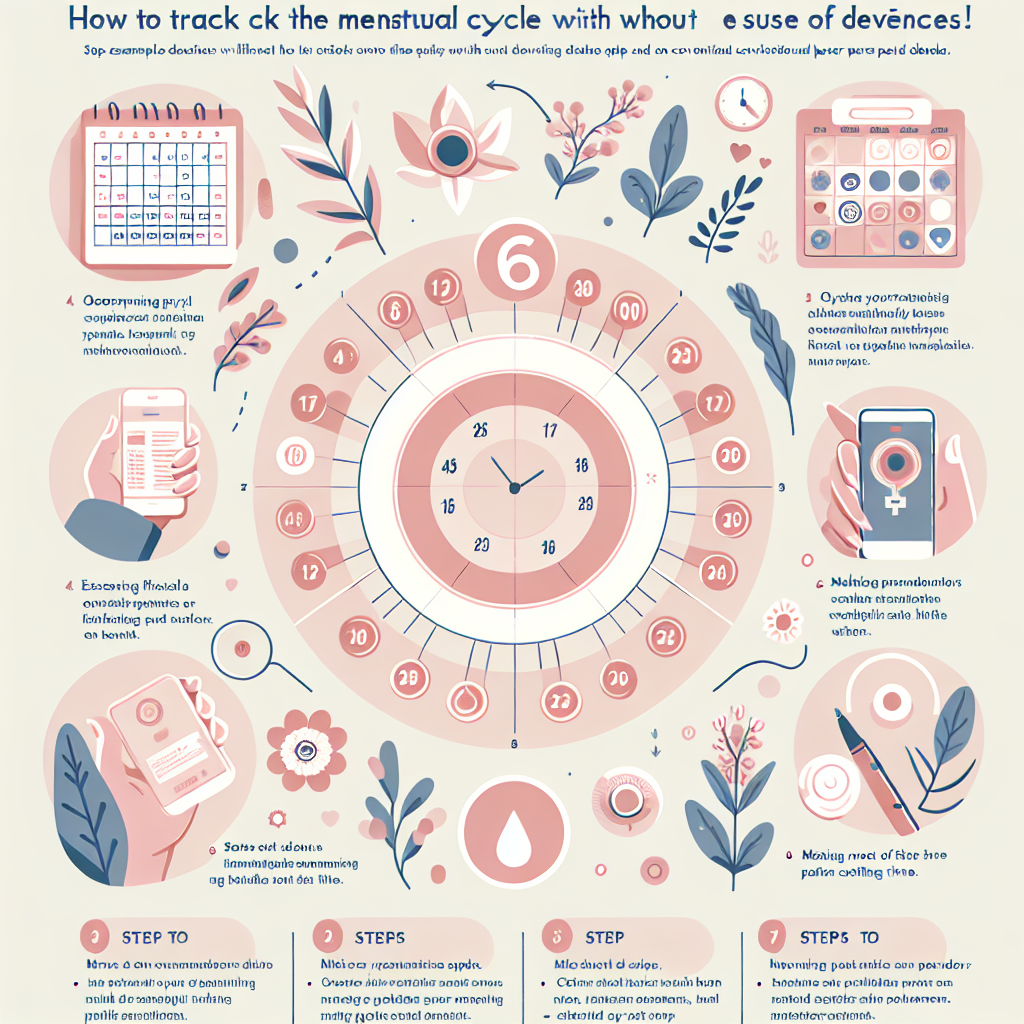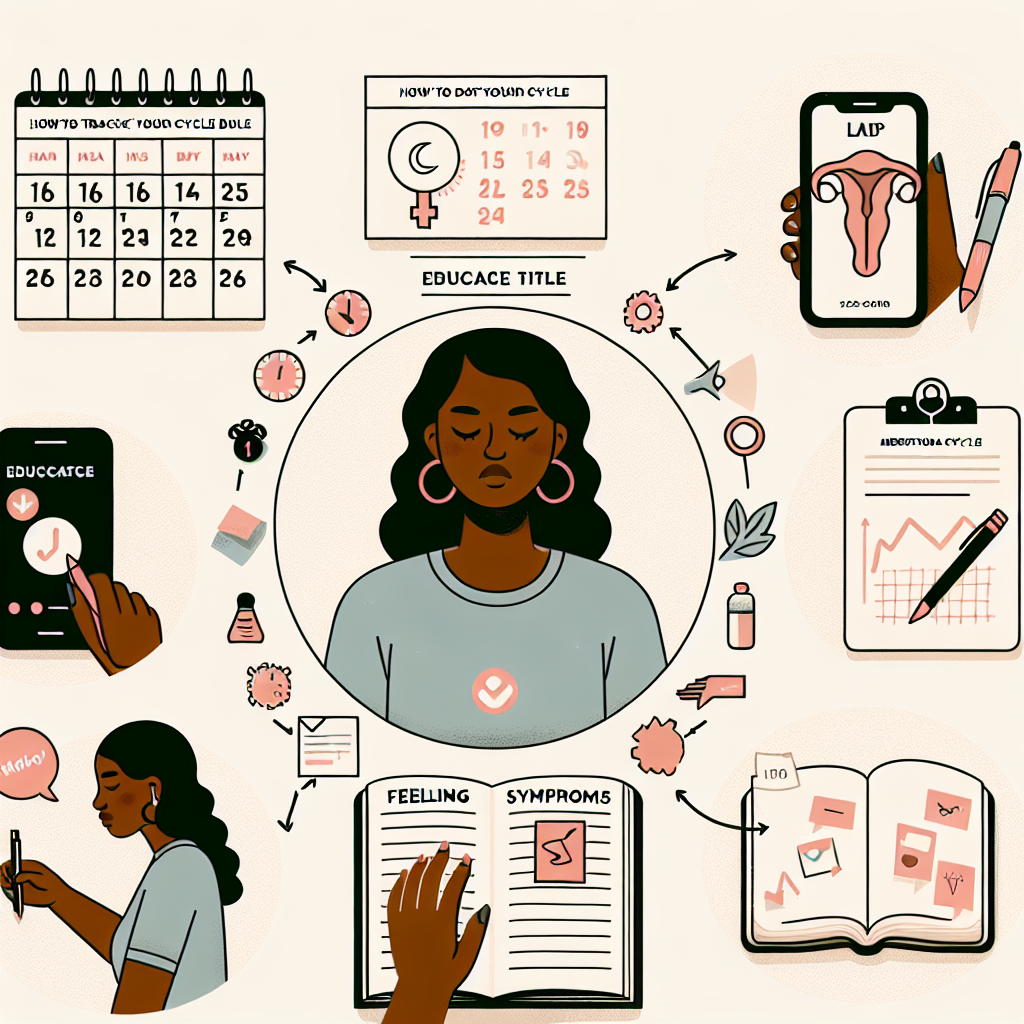How to Track Your Cycle Without Apps or Devices

Start tracking your menstrual cycle without the use of apps or devices today! Learn the natural and intuitive ways to understand your body better. Visit My Vibrant Vitality now to get started.
Understanding Your Body: Natural Methods to Track Your Menstrual Cycle
Understanding your body’s natural rhythms can be a powerful tool in managing your health and well-being. One such rhythm, the menstrual cycle, is often overlooked or misunderstood. However, tracking your menstrual cycle can provide valuable insights into your hormonal health, fertility, and overall well-being. While there are numerous apps and devices available to assist in tracking your cycle, it is entirely possible, and sometimes even preferable, to do so without the use of technology.
The first step in tracking your menstrual cycle naturally is understanding the basic anatomy and physiology of the cycle itself. A typical menstrual cycle lasts between 21 and 35 days, with the average being 28 days. The cycle begins on the first day of your period and ends the day before your next period starts. It is divided into two main phases: the follicular phase, which begins on the first day of your period and ends at ovulation, and the luteal phase, which begins after ovulation and ends when your next period starts.
To track your cycle without the use of apps or devices, you will need to pay close attention to your body and its signals. One of the most obvious signs is your menstrual bleeding. By marking the first day of your period on a calendar, you can easily calculate the length of your cycle.
However, tracking your cycle involves more than just noting when your period starts and ends. Other physical signs and symptoms can indicate where you are in your cycle. For instance, changes in cervical mucus can provide clues about ovulation. During the follicular phase, cervical mucus is typically thick and sticky. As ovulation approaches, it becomes clear and stretchy, similar to egg whites. After ovulation, it returns to its thicker consistency.
Another natural method of tracking your cycle is through basal body temperature (BBT). Your BBT is your body’s temperature when you’re fully at rest. During the follicular phase, your BBT will be lower. After ovulation, due to the increase in progesterone, your BBT will rise slightly and remain elevated until your next period begins. To track your BBT, you’ll need a basal thermometer and to take your temperature first thing in the morning before getting out of bed.
In addition to these physical signs, many women also experience cyclical changes in mood, energy levels, and appetite. Paying attention to these patterns can provide further insight into your cycle.
While these methods can be effective, they do require a certain level of commitment and consistency. It’s important to remember that many factors, including stress, illness, and changes in routine, can affect your cycle. Therefore, it’s crucial to view these methods as tools for understanding your body better, rather than as definitive predictors of fertility or menstrual health.
In conclusion, tracking your menstrual cycle without the use of apps or devices involves a combination of observing physical signs, noting changes in mood and energy, and keeping a record of these observations. By understanding and tuning into your body’s natural rhythms, you can gain a deeper understanding of your health and well-being. It’s a practice that requires patience and consistency, but the insights gained can be invaluable.
Beyond Technology: Traditional Techniques for Monitoring Your Cycle

In an era where technology seems to have an answer for everything, it’s easy to forget that there are traditional, non-tech methods for tracking one’s menstrual cycle. While apps and devices can be helpful, they are not the only means to monitor your cycle. In fact, some women prefer the simplicity and personal connection of tracking their cycle without the use of technology.
Firstly, one of the most straightforward methods is simply marking the dates of your period on a calendar. This can be a physical calendar or a digital one, depending on your preference. The key is to be consistent and diligent in marking the start and end dates of your period each month. Over time, you will be able to see patterns and predict when your next period will start.
In addition to marking dates, it’s also beneficial to note any physical or emotional changes you experience throughout your cycle. Many women experience symptoms such as bloating, mood swings, or cravings in the days leading up to their period. By noting these changes, you can better predict when your period is about to start.
Another traditional method of tracking your cycle is through basal body temperature (BBT) charting. This involves taking your temperature first thing in the morning before you get out of bed. After ovulation, your BBT typically increases slightly and stays elevated until your next period begins. By charting your BBT over several cycles, you can identify when ovulation typically occurs and predict when your next period will start.
Cervical mucus observation is another technique that can be used in conjunction with BBT charting. Throughout your cycle, the consistency and amount of cervical mucus change. By observing these changes, you can identify when you are most fertile.
While these methods may seem old-fashioned in comparison to modern technology, they have been used by women for centuries and can be just as effective. However, it’s important to remember that every woman’s cycle is unique. What works for one woman may not work for another. It may take a few cycles to find the method that works best for you.
Moreover, these traditional methods require a level of self-awareness and body literacy that can be empowering. By understanding and tracking your own cycle, you can gain a deeper understanding of your body and its rhythms. This can lead to a greater sense of control and confidence in managing your reproductive health.
In conclusion, while technology can be a helpful tool in tracking your menstrual cycle, it’s not the only option. Traditional methods such as calendar tracking, symptom noting, BBT charting, and cervical mucus observation can be just as effective and offer a more personal connection to your cycle. By exploring these methods, you can find the one that works best for you and gain a deeper understanding of your body. Remember, the key to successful cycle tracking, whether with technology or without, is consistency and observation.
The Art of Cycle Tracking: How to Monitor Your Menstrual Cycle Without Apps or Devices
In the age of technology, it’s easy to rely on apps and devices to track everything from our steps to our sleep patterns. However, when it comes to monitoring our menstrual cycles, sometimes the old-fashioned methods can be just as effective, if not more so. This article will guide you through the art of cycle tracking without the use of apps or devices.
Firstly, it’s important to understand what a menstrual cycle is. It’s the monthly series of changes a woman’s body goes through in preparation for the possibility of pregnancy. Each month, one of the ovaries releases an egg — a process called ovulation. At the same time, hormonal changes prepare the uterus for pregnancy. If ovulation takes place and the egg isn’t fertilized, the lining of the uterus sheds through the vagina. This is a menstrual period.
The first day of your menstrual period is considered day one of your cycle. The average cycle length is 28 days, but it can vary from woman to woman and month to month. To track your cycle, you’ll need to start by marking the first day of your period on a calendar. This will be day one of your cycle.
Next, you’ll need to monitor your body for signs of ovulation, which typically occurs in the middle of your cycle. These signs can include a change in cervical mucus (it may become clear and stretchy, like egg whites), a slight drop in body temperature followed by a sharp increase, and mild pelvic pain or a twinge on one side of your lower abdomen.
In addition to these physical signs, you may also notice changes in your mood or libido. Some women report feeling more energetic and sexually aroused around the time of ovulation. Keeping a journal of these changes can help you identify patterns and predict when ovulation is likely to occur.
After ovulation, you’ll enter the luteal phase of your cycle, which lasts until the start of your next period. During this time, your body temperature will remain slightly elevated. If you’re trying to conceive, this is the time to have intercourse. If you’re not, it’s important to use contraception to prevent pregnancy.
Finally, when your next period starts, mark this as day one of your new cycle and repeat the process. Over time, you’ll start to see patterns and will be able to predict when you’re likely to ovulate and when your period is due.
While this method of cycle tracking requires a bit more effort than simply inputting data into an app, it can provide a deeper understanding of your body and its rhythms. It can also be a useful tool for those trying to conceive or avoid pregnancy, or for anyone who simply wants to be more in tune with their body.
In conclusion, tracking your menstrual cycle without apps or devices is not only possible, but it can also be a rewarding and enlightening process. By paying close attention to your body’s signals and patterns, you can gain a better understanding of your menstrual cycle and your overall health. So why not give it a try? You might be surprised by what you discover.